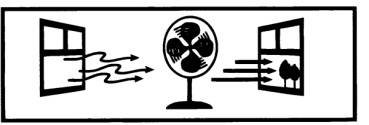
Lead Molding Instructions
Before melting your own lead, read and understand all of these important safety rules!
Before melting your own lead, read and understand all of these important safety rules!
Some Safety Tips
Molding lead is economical, fun, and easy when done properly. We suggest you follow these
simple tips:
1. Always wear gloves and eye protection.
2. Always work in a well ventilated area! Use strong ventilation!
3. Keep the work area around the molten metal dry and free of moisture. This includes the crucible.
Moisture expands when it comes into contact with hot metal. This expansion can cause "splatter"
of the hot metal, and can cause serious burns.
4. NOTICE: We recommend a light coat of Vaseline on your hands, arms, and face. This will help
prevent burns if "splatter" does occur.
5. Always wear a long sleeved shirt, long pants, and shoes.
6. Pre-heat all tools that come into contact with lead.
** See bottom of this page for additional important safety information! **
Liability Disclaimer
Dolphin Sports, Inc., does not accept any liability of any kind for accidents or poisonings by lead
fumes.
Let's Get Started!
Pure lead melts at 621 degrees F., so you must be extremely careful. Lead is alloyed with tin which
melts at slightly less temperature. Most lead is alloyed with antimony, which melts at slightly more
temperature. The best lead to use is "caulking lead." Try to obtain as pure a lead as possible (not
to exceed 6% antimony content). You will mold better quality parts, especially on smaller jigs.
Where to Buy Lead
You may use wheel weights or shot gun shot. Usually junk yards have lead. If you have
any old jig heads that are no longer desirable or have broken hooks, you may also re-melt these.
Melting Lead
Do not use an acetylene torch. You may melt your tools and cause an accident!
The most desirable and safest way is to use a quality lead melting furnace such as those sold by
Dolphin Sports, Inc.
Pre-Heating and Smoking Mold
Place your mold on top of the furnace to pre-heat the mold while the lead is melting. Mold should
sit on the mold sides with both sides in contact of the furnace. Take extra caution not to melt your
plastic handles. These handles are made of PVC and are very strong, but will melt at high
temperatures. If you melt your handles, it's your responsibility. Next, you may want to smoke your
mold. This process is done with a candle and will enable your parts to be released from the mold
easily. The mold cavities should be ugly black when properly smoked. Now let's check and clean
the parting surface of your mold. Carefully inspect for dirt or lead build-up on the parting surface.
Close mold and hold up to light to make sure mold closes completely or your parts will have "flash".
Next, you must check to make sure your hooks, wires, and eyelets fit the mold and the mold closes
completely. Hilts Molds are machined very precise. Hook numbers are on every mold. Our inserts fit our molds. If you use other inserts make sure they fit properly or we disclaim our warranty.
Warming Your Mold
Do not use Acetylene Torch. You must pre-heat your mold and all tools to produce quality parts.
This is easiest done by placing the mold over your lead pot.
Casting Parts
Now close your mold and make some trial parts (without any inserts). Do this 2 or 3 times until
your mold produces a good finished part. A good finished part is a part without visible fracture lines
in the lead. Be careful, without inserts your mold may leak through!
Now put your insert in place. After closing the mold you may lay the mold on your table and gently
tap with a piece of lead to seat inserts or hooks. Make a casting. As soon as your mold is full you
can open it. Lead cools quickly and will not run out.
Any time you stop casting metal for more than 2 minutes, put your mold back over the lead furnace
(as in pre-heating) to keep the mold warm.
Tips
Eyelets sometimes are hard to load into mold. Rub a bar of soap on eyelet cavity. This will hold
eyelet perfectly.
After using your mold a while, it is normal to have lead build up on the parting surface. Remove this
with a file. Be sure the file lays flat. Do not remove any of the mold material.
The lead will load your file. Clean the file by rubbing the edge of a penny from side to side on it.
Removal and Trimming Molded Parts
Casting with larger hooks (spinner baits, larger jigs): These can easily be grabbed by hand and
pulled out. Do not grab newly molded lead! If you cannot grab the hook or wire by hand, pliers must be used to grab the casting at the gate area and remove. Do not use screwdriver or pry casting
loose with anything. You may damage your mold.
Molding small jigs from a bottom pour pot: Bring the mold in firm contact with the spout- lift the
handle- count 1-2-3-4 - release- and open the mold.
Copyright 2002, Dolphin Sports, Inc.

|
WARNING: Melting lead and casting lead objects will expose |
|
Reducing Exposure: Lead contamination in air, in dust, and on your skin is invisible. Keep children and pregnant women away during use and until clean up is complete. Risk can be reduced -- but not eliminated -- with strong ventilation; washing hands immediately after use of these products before eating or smoking; and careful cleaning of surfaces and floors with disposable wipes, after lead dust has had a chance to settle. Use a lead - specific cleaner with EDTA, or a high - phosphate detergent (like most detergents sold for electric dishwashers), and bag wipes for disposal.
|
|
|
Use |

|
